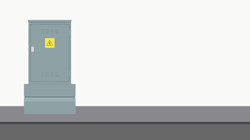Enclosures in challenging environments need mechanical and thermal design considerations
Steve Jopek is SEC operations manager at Pepperl+Fuchs.
Tell us about your company’s state-of-the-art enclosure offering.
What have been the biggest improvements in enclosures over the past five years?
Steve Jopek, SEC operations manager, Pepperl+Fuchs: The design of the cabinets has not changed significantly; however, the changes in manufacturing processes have contributed to higher product quality. The increasing use of robotic or automated welding and machining processes has improved product consistency and allowed for greater customization.
Advanced manufacturing is enabling enhanced modularity in product offerings. Increasingly, more integration is required from vendors, as customers move to fewer suppliers offering more services.
Global customers are also using enclosures in applications that must meet a variety of international and country-specific standards, requiring more design and engineering considerations to achieve these certifications. This need has led suppliers to consider additional environmental, thermal and mechanical factors.
What’s the most innovative or efficient enclosure application you’ve ever seen or been involved with?
Steve Jopek, SEC operations manager, Pepperl+Fuchs: A few years ago, we had a rather interesting application in a hazardous area. It was a gasification plant with several cascading control enclosures connected to about 20 infrared cameras. The entire system was protected by a purging unit—this included both the main controls and all remote cameras. The cameras were installed in a spiral around the gasification column to continuously monitor temperature. The system architecture essentially consisted of several control cabinets located at ground level and connected to each camera via a 2-inch supply cable. The supply cable contained power and communication lines and allowed air to pass through to each camera for purging, where it was vented locally. Due to the purging requirements, each main cabinet was reinforced in terms of pressure and design to accommodate the large number of camera supply cables.
Keeping cabinets properly cool or warm is important. Can you explain the basics of thermal management within enclosures: why is it important, what causes temperature changes, and how is thermal management affected by extreme environments?
Steve Jopek, SEC operations manager, Pepperl+Fuchs: In control cabinets, every single electrical component, including cables and some mechanical devices contribute to heat dissipation into the cabinet environment. When planning, it is important to be aware of which devices contribute the most heat to the solution and strategically position these components along with cooling elements.
For small temperature rises, the use of a fan/vent or thermoelectric cooler may be sufficient to maintain the required ambient temperature. For larger heat loads, the use of heat exchangers or air-conditioning units is more suitable. Installing cabinets in hazardous areas limits the available technologies that can be used for cooling, but air conditioners designed for hazardous areas are available, and vortex coolers are also an excellent choice for areas with explosive gases or dust.
In colder environments, the challenge is often to keep electrical equipment at minimum storage temperatures when not in active use. Simple radiant heaters are available in many different footprints and can help moderate cabinet temperatures to avoid extreme temperature fluctuations that can lead to condensation. External factors such as sun exposure, heating from adjacent equipment and the general ambient climate should be considered when selecting the appropriate heating or cooling system.
Enclosures and thermal-management products tend to have a difficult time surviving in harsh, corrosive environments. Which enclosure components are most susceptible to failure, and what can be done to address this, as well as lifetime performance?
Steve Jopek, SEC operations manager, Pepperl+Fuchs: Enclosure design and construction quality are paramount for challenging environments. In most cabinets, the sealing and latching elements are the first points of failure, either due to damage or corrosion. It is important that the cabinet be thoroughly cleaned after construction to remove any residue of foreign materials or chemicals such as acids, solvents or primers. These chemicals can permeate hinges and latches and become noticeable later in the product lifetime. For painted cabinets, it is important to properly prepare the surface for painting and then verify the application of the coating through thickness measurements and adhesion tests. For any type of cabinet, a regular inspection and maintenance program is essential, especially in rugged environments. A regular physical inspection of the cabinet allows potential problems to be proactively addressed before they become serious issues that require systems to be shut down.
About the Author
Mike Bacidore
Editor in Chief
Mike Bacidore is chief editor of Control Design and has been an integral part of the Endeavor Business Media editorial team since 2007. Previously, he was editorial director at Hughes Communications and a portfolio manager of the human resources and labor law areas at Wolters Kluwer. Bacidore holds a BA from the University of Illinois and an MBA from Lake Forest Graduate School of Management. He is an award-winning columnist, earning multiple regional and national awards from the American Society of Business Publication Editors. He may be reached at [email protected]

Leaders relevant to this article:


